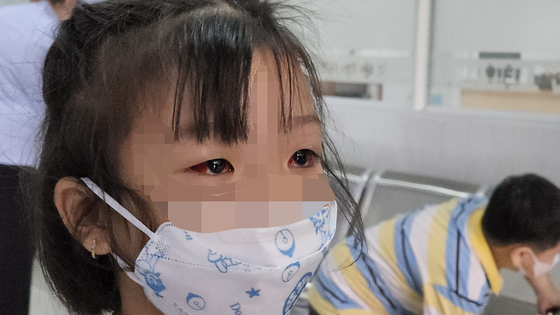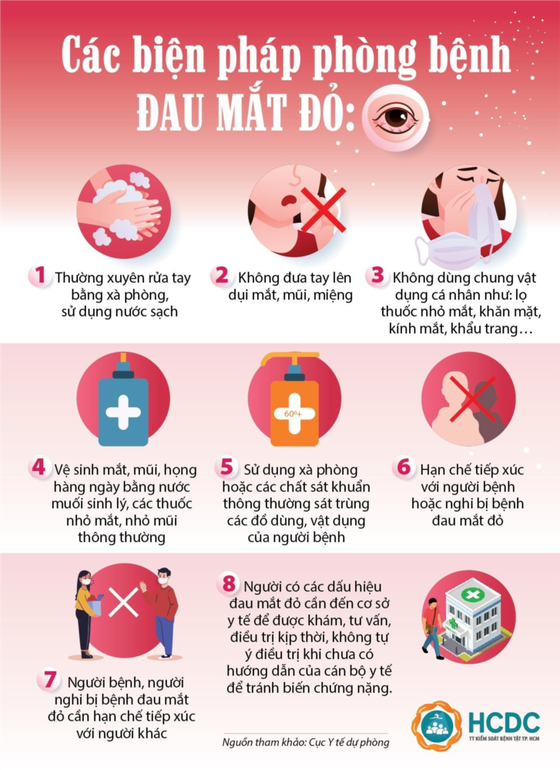SGGPO
The Ho Chi Minh City Department of Health has coordinated with the Oxford University Clinical Research Unit (OUCRU) to conduct research to find and accurately identify the cause of pink eye; at the same time, sent a document to the Department of Education and Training to proactively increase detection, instruct students and parents on how to detect and prevent pink eye.
 |
| A child with pink eye is being treated at Children's Hospital 2. |
On September 6, the Ho Chi Minh City Department of Health said that, in response to the recent increase in conjunctivitis (pink eye) cases, the department has directed the Ho Chi Minh City Eye Hospital, the Ho Chi Minh City Center for Disease Control (HCDC) to coordinate with the Oxford University Clinical Research Unit (OUCRU) to urgently conduct research to find the exact cause of the disease.
According to the Ho Chi Minh City Department of Health, since the beginning of the year, the number of cases of pink eye in Ho Chi Minh City is 71,740, of which, it is worth noting that the number of cases in recent days has tended to increase compared to the first months of the year. About 1/3 of the cases are school-age children, the rest are adults.
According to a report from the Ho Chi Minh City Eye Hospital, it is worrying that a number of cases of conjunctivitis (a severe clinical form of pink eye) have been detected recently, although they are not yet common.
In Ho Chi Minh City, 2013 was the year with the highest number of cases of pink eye recorded in the past 10 years. Since then, the number of cases of pink eye has been recorded every year but not much.
Pink eye can be caused by many different reasons. If symptoms such as mild fever, fatigue, sore throat, sticky eyelids, difficulty opening eyes, swollen lymph nodes in front of the ear or under the jaw appear, the common cause is conjunctivitis caused by Adenovirus, which is easily spread through direct contact.
In this case, the sick person should stay home (take a break from work/school for 5-7 days) and limit contact to avoid spreading the disease to others. When signs of pink eye are detected, go to the nearest medical facility for diagnosis, guidance and appropriate care.
According to recommendations from eye experts and HCDC, the simplest but most effective measures to prevent the spread of viral conjunctivitis (commonly Adenovirus) are: regularly wash your hands with soap and clean water; do not rub your eyes, nose, or mouth; do not share personal items (eye drops, towels, glasses, masks, etc.).
Clean eyes, nose, and throat daily with saline, regular eye drops, and nasal drops; use soap or common antiseptics to disinfect the patient's belongings and utensils; limit contact with people who have or are suspected of having pink eye.
Patients and people suspected of having pink eye should limit contact with others; people with signs of pink eye should go to a medical facility for examination, consultation and timely treatment. Do not self-treat without the guidance of a medical professional to avoid serious complications.
 |
Source























































![[Maritime News] Two Evergreen ships in a row: More than 50 containers fell into the sea](https://vphoto.vietnam.vn/thumb/402x226/vietnam/resource/IMAGE/2025/8/4/7c4aab5ced9d4b0e893092ffc2be8327)












































Comment (0)